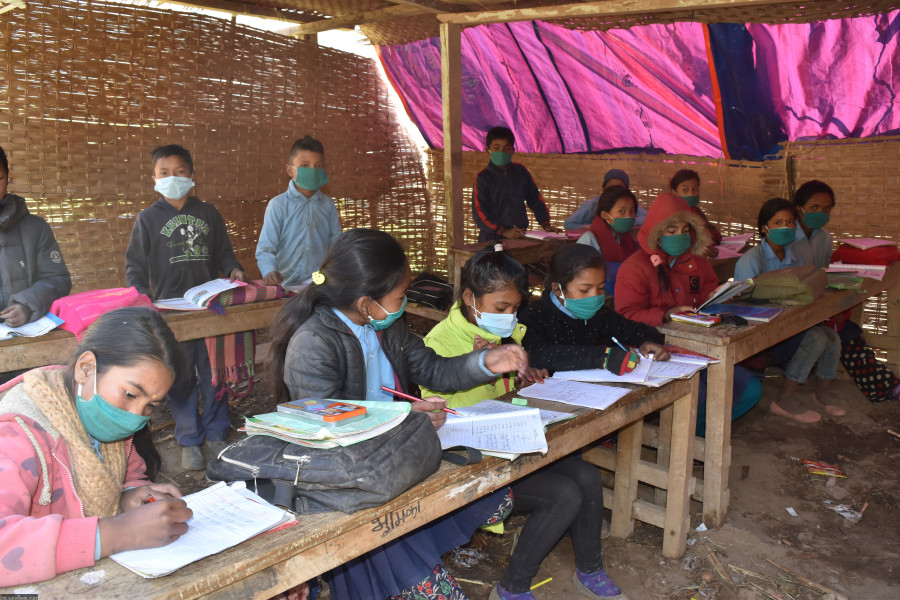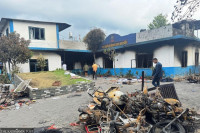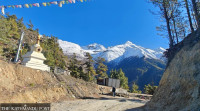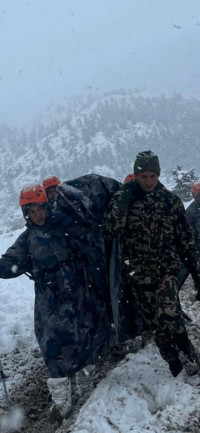Gandaki Province
Quake-damaged schools finally rebuilt in Baglung local unit
Half a dozen schools had been conducting classes out in the open since the earthquakes damaged their buildings.
Prakash Baral
The completion of the reconstruction work of half a dozen schools in Tamankhola Rural Municipality, Baglung has finally put the students and teachers out of their misery. The 2015 earthquakes had damaged the school buildings, forcing these educational institutions to conduct classes out in the open.
Roshan Shreepali, a 5th grader at Janjyoti Basic School in Tamankhola, says he had stopped attending his classes regularly because he couldn’t focus on his lessons.
“It was very difficult for me to sit and study outside every day. On a sunny day, I would get a bad headache, and during the winter and monsoon, I would catch a cold. A lot of my classmates dropped out of school after the earthquake,” said Shreepali.
There are 153 students enrolled in the school at present. Before the earthquake, the number stood at 250.
“Absenteeism and dropout rate increased after the earthquake damaged our school building. But we could not immediately repair or reconstruct the building since the rural municipality had not issued the budget. The school authorities were compelled to conduct classes in the open field,” said Bhavindra Pun, principal at Janajyoti Basic School.
According to Pun, the reconstruction of the school building had started in 2017 in collaboration with the rural municipality and National Reconstruction Authority. The National Reconstruction Authority built a four-room building at an investment of Rs 7.4 million while the rural municipality spent Rs 2.2 million to add a floor with four rooms.
“The number of classrooms is not enough to accommodate the current number of students so we have partitioned each classroom into two with a plywood,” said Pun.
The guardians of some students who attended Janjyoti Basic School chose to move their wards to other schools since the reconstruction of the school building was taking too long.
“Those who could afford to send their children to schools in cities or other rural municipalities did so since the school structure was damaged and at risk of a collapse,” said Chudamani Santhyal, whose children attend Janjyoti Basic School. “But for others like us, we had to continue sending our children to the school because we couldn’t afford to send them to other schools. Our children suffered the most during the rainy season.”
According to Joklal Budha, chairman of Tamankhola Rural Municipality, reconstruction works could not start earlier because it took the National Reconstruction Authority almost two years after the earthquake to visit the site, inspect and complete the necessary paperwork.
“The officials said the difficult geographical location of the rural municipality caused delays,” Buddha said “It takes two hours to go to the district headquarters Bungadovan from here. So even the pace of the reconstruction work was slow.”
After the agreement between the rural municipality and the National Reconstruction Authority, it took the authorities five years to complete the work.
“There were some budget issues and human resource shortages,” said Budha. “But now, after all these years, the reconstruction of all six schools in the rural municipality has been completed.”
Kholeswang Basic School in Ward 2, Bishnu Basic School in Ward 6, Shanti Secondary School in Ward 5, Dhangaujyoti Secondary School in Ward 3 and Vidyasagar Primary School in Ward 1 of the rural municipality had also suffered major damages during the 2015 earthquake.
Purna Bahadur Gharti, the education officer at the rural municipality, says the local unit understands the importance of running well-equipped schools in the rural areas and has added additional teacher posts in all 21 community schools of the rural municipality. The municipal office has also provided all schools with a computer set and an English teacher each.
“We want to improve the quality of education in the rural areas so we have invested in not just the physical infrastructure but also in improving the learning environment in these schools,” said Gharti.




 9.12°C Kathmandu
9.12°C Kathmandu.jpg)










